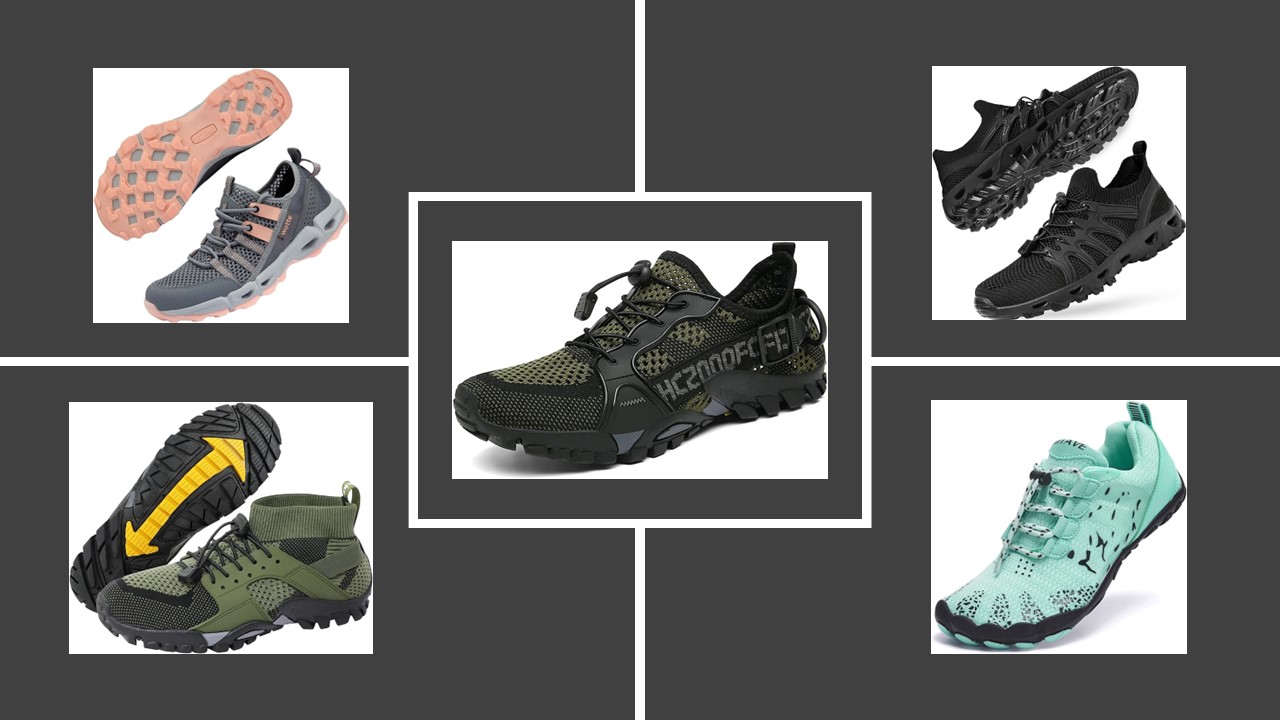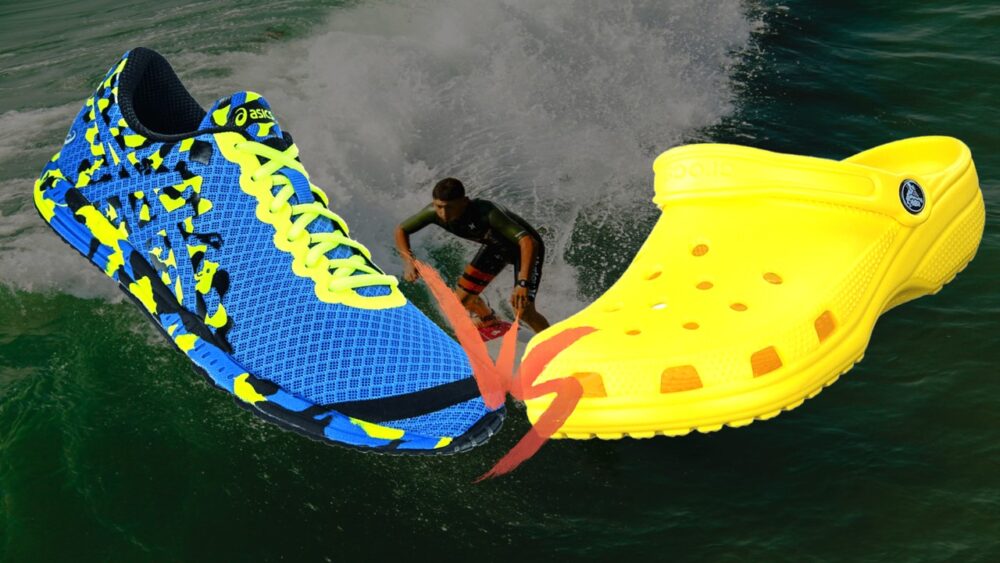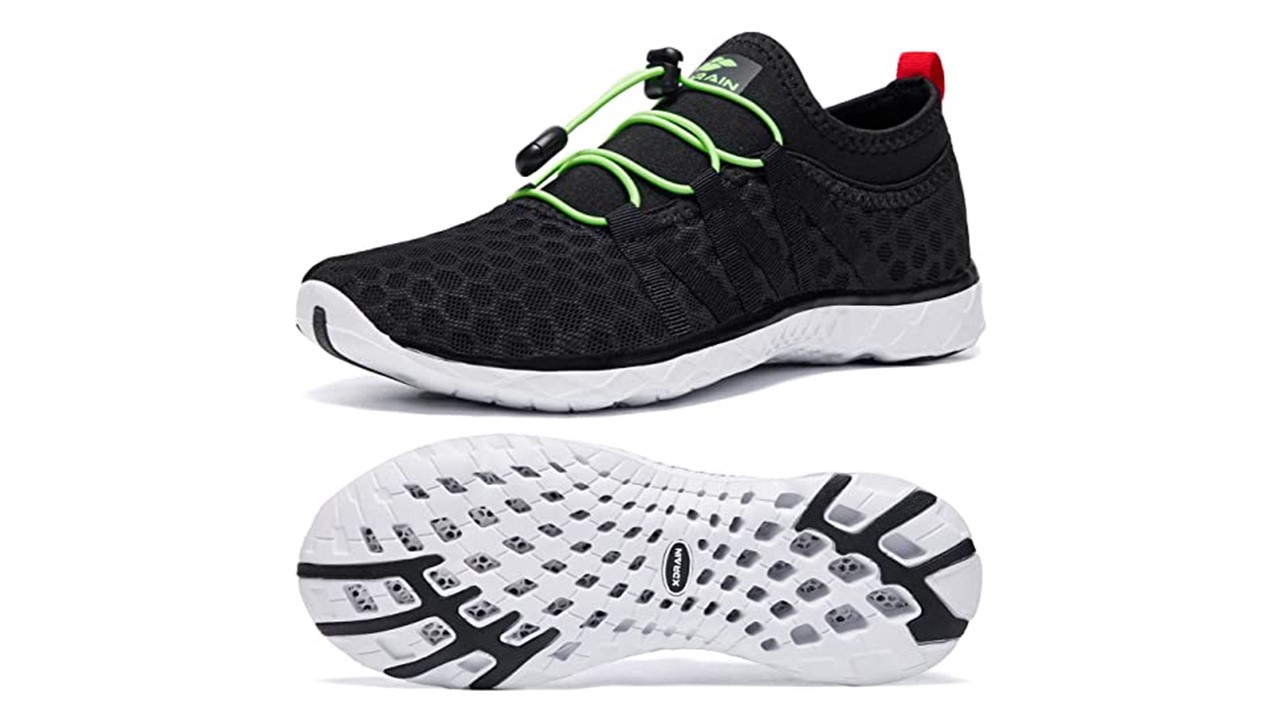How Much Do Water Shoes Weigh – Discover The Perfect Weight For Your Water Adventures
How much do water shoes weigh? Water shoes typically range from 0.22 to 1.1 pounds, but the weight can vary based on the design, material, and intended use. The weight of water shoes is a critical factor affecting comfort and performance across a spectrum of activities.
In the world of water shoes, weight isn’t just a number on a tag; it’s a defining feature that impacts your experience. Lightweight shoes offer agility and ease of movement, ideal for water sports enthusiasts seeking enhanced performance. Conversely, slightly heavier shoes often promise sturdier soles and better protection.
In this article, we’ll dive into the significance of water shoe weight across different activities, compare various brands and designs, provide expert insights on choosing the right weight for your specific needs, and share practical tips for maximizing comfort and performance.
How Much Do Water Shoes Weigh
Water shoes come in various weights, typically ranging from 0.22 to 1.1 pounds per shoe. However, this weight can fluctuate based on multiple factors, such as the design, materials used, and the shoe’s intended purpose. So, the weight can be more.
The variability in weight is indeed influenced by a multitude of factors. The materials chosen, the intricacies of design, and the intended purpose all contribute to these fluctuations.
For instance, shoes designed with heavier, sturdier materials like certain types of rubber or thicker soles might tip the scale toward the higher end of that weight spectrum. Conversely, shoes crafted with lighter, breathable materials or minimalist designs aimed at water sports might fall on the lighter side.
The weight of water shoes, whether within the typical range or beyond, remains a key consideration for users. It directly impacts comfort, agility, and performance across various activities.
Understanding this range and the factors that influence it allows you to make informed choices based on your needs and preferences.
Factors Influencing Water Shoes’ Weight
1. Materials
The materials used significantly impact the weight of water shoes. Lightweight, breathable materials like mesh or synthetic fabrics contribute to a lighter overall shoe weight. In contrast, thicker or more robust materials like neoprene might add a bit more heft to the shoe for added durability and protection.
2. Design
The design elements, such as added drainage systems, midsole cushioning, and outsole structure, can also affect the weight. Drainage systems might add weight but are essential for water sports, while cushioning or supportive features might slightly increase the overall weight.
3. Purpose
The intended use of the water shoes also plays a role. Shoes designed for specific activities, like kayaking, rafting, or casual beach walking, might be tailored for different weights.
Shoes for intense water activities might prioritize lightweight designs, while those intended for hiking through wet terrains might have slightly more weight for added sturdiness.
Different Types And Brands Of Water Shoes With Weight (How Much Do Water Shoes Weigh)
| Type Of Water Shoe | Brand | Weight (pounds Per Shoe) | Comfort And Performance Impact |
| Aqua shoes | Aleader | 0.22 | Extremely lightweight and comfortable. Ideal for swimming, kayaking, and yoga on the beach. |
| Aqua shoes | ATHMILE | 0.22 | Extremely lightweight and comfortable. Ideal for swimming, kayaking, and yoga on the beach. |
| Aqua shoes | Alibress | 0.44 | Slightly heavier than other aqua shoes, but still very comfortable. Ideal for a variety of water-related activities. |
| Water hiking shoes | Speedo | 0.55 | More durable and supportive than aqua shoes. Ideal for water hiking and walking on rocky terrain. |
| Water hiking shoes | Merrell | 0.77 | More durable and supportive than aqua shoes. Ideal for water hiking and walking on rocky terrain. |
| Water hiking shoes | Keen | 11.6 | The heaviest water shoes on the list, but also the most durable and supportive. Ideal for challenging water-related activities, such as hiking through rivers and streams. |
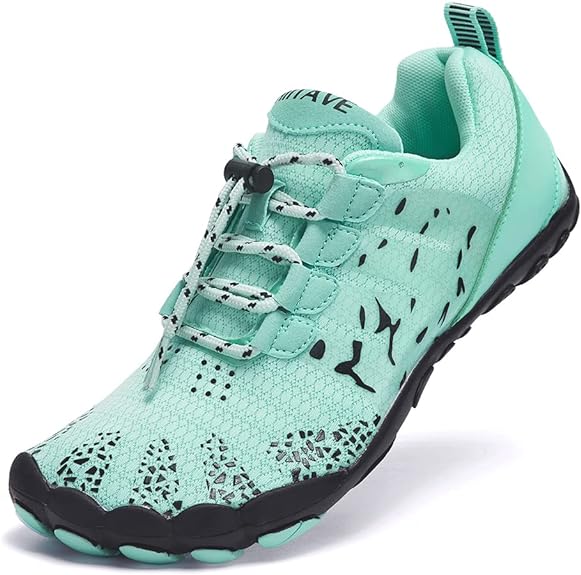
Significance Of Water Shoes Weight (How Much Do Water Shoes Weigh)
The weight of water shoes holds significant importance as it directly influences comfort, performance, and functionality across various water-based activities. Understanding its significance can guide you in choosing the most suitable footwear for your needs.
Lighter shoes offer greater agility and ease of movement, ideal for water sports enthusiasts requiring enhanced performance. Conversely, slightly heavier shoes might offer sturdier soles and better protection, catering to hikers and campers looking for durability in rugged terrains.
1. Performance And Agility
The weight of water shoes affects one’s agility and maneuverability in water-related activities. Lighter shoes offer enhanced agility, making them ideal for sports like kayaking, paddleboarding, or aqua aerobics.
They allow for swift movements and better performance, crucial in these dynamic and often fast-paced activities.
2. Comfort And Endurance
The right weight can significantly impact comfort and endurance. Shoes that are too heavy might lead to fatigue over extended periods, while lighter shoes reduce strain and fatigue, enabling you to enjoy your activities for longer durations without feeling weighed down.
3. Protection And Durability
The weight of water shoes can also affect their level of protection and durability. Heavier shoes might provide more robust protection against rough terrains, rocks, or sharp objects, while lighter shoes might be less encumbering but may sacrifice a bit on protection.
Understanding the significance of water shoe weight allows you to align your footwear choice with the demands of your specific activity.
Whether it’s prioritizing agility for water sports or seeking sturdier shoes for hiking through wet terrains, the weight becomes a critical factor in optimizing both performance and comfort.
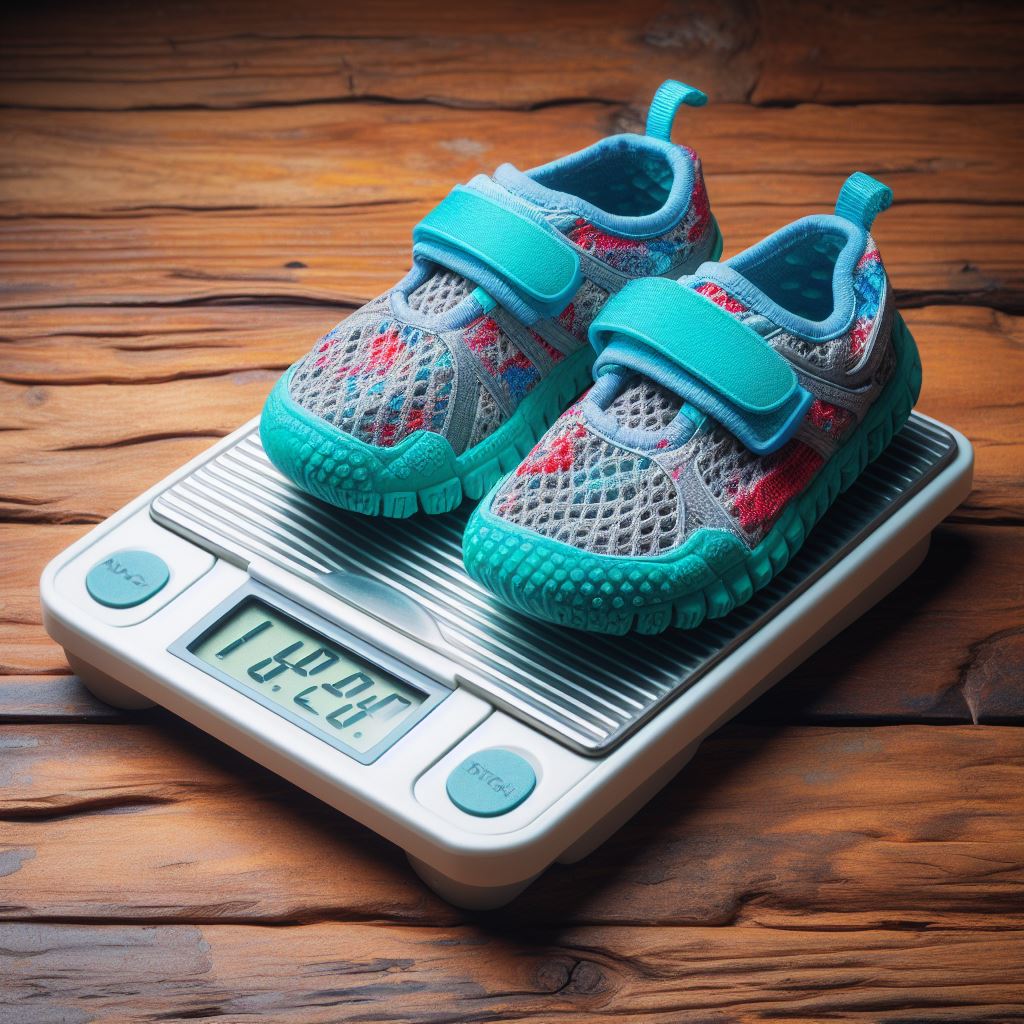
How Weight Affects The Functionality Of Water Shoes (How Much Do Water Shoes Weigh)
The weight of water shoes plays a pivotal role in determining their functionality across a range of water-related activities. Understanding how weight influences performance can guide you in selecting the most appropriate footwear for your intended use.
| Activity | Weight | Functionality |
| Swimming and kayaking | Lighter | More agile and easier to move around in. Less likely to cause drag. |
| Water hiking and walking on rocky terrain | Slightly heavier | More durable and provide better support. Less likely to slip on wet rocks. |
| Other water-related activities | Not as important | Choose water shoes that are comfortable and provide the level of protection you need for the activity you are doing. |
1. Lighter Shoes for Dynamic Water Sports
In dynamic water sports like kayaking, paddleboarding, or snorkeling, lighter shoes reign supreme. Their reduced weight facilitates swift movements and agility.
This agility is crucial for swift paddling, quick turns, or swift footwork. Lighter shoes contribute to enhanced performance, enabling athletes or enthusiasts to maneuver swiftly and maintain their pace, which is vital for these activities.
2. Durability and Protection for Rugged Terrains
Conversely, slightly heavier water shoes can offer enhanced durability and protection, particularly in scenarios involving rough terrains, such as hiking in wet or rocky areas.
Heavier shoes often boast sturdier soles and robust construction, shielding the feet from potential impacts, sharp objects, or rough surfaces.
While they might compromise some agility, these shoes prioritize durability and protection, crucial for hikers or adventurers navigating challenging environments.
3. Adaptability Across Activities
Water shoes vary in weight to cater to the specific demands of diverse activities. Some are designed for multi-functional use, striking a balance between weight, protection, and agility.
These adaptable shoes might offer a moderate weight, providing a blend of protection and maneuverability suitable for various activities, from light water sports to moderate hiking.
Understanding the impact of weight on functionality allows you to match the right shoe to the demands of your preferred water-related activities.
Whether it’s the need for agility in sports or the requirement for durability in rugged terrains, the weight of water shoes significantly influences performance and overall experience.
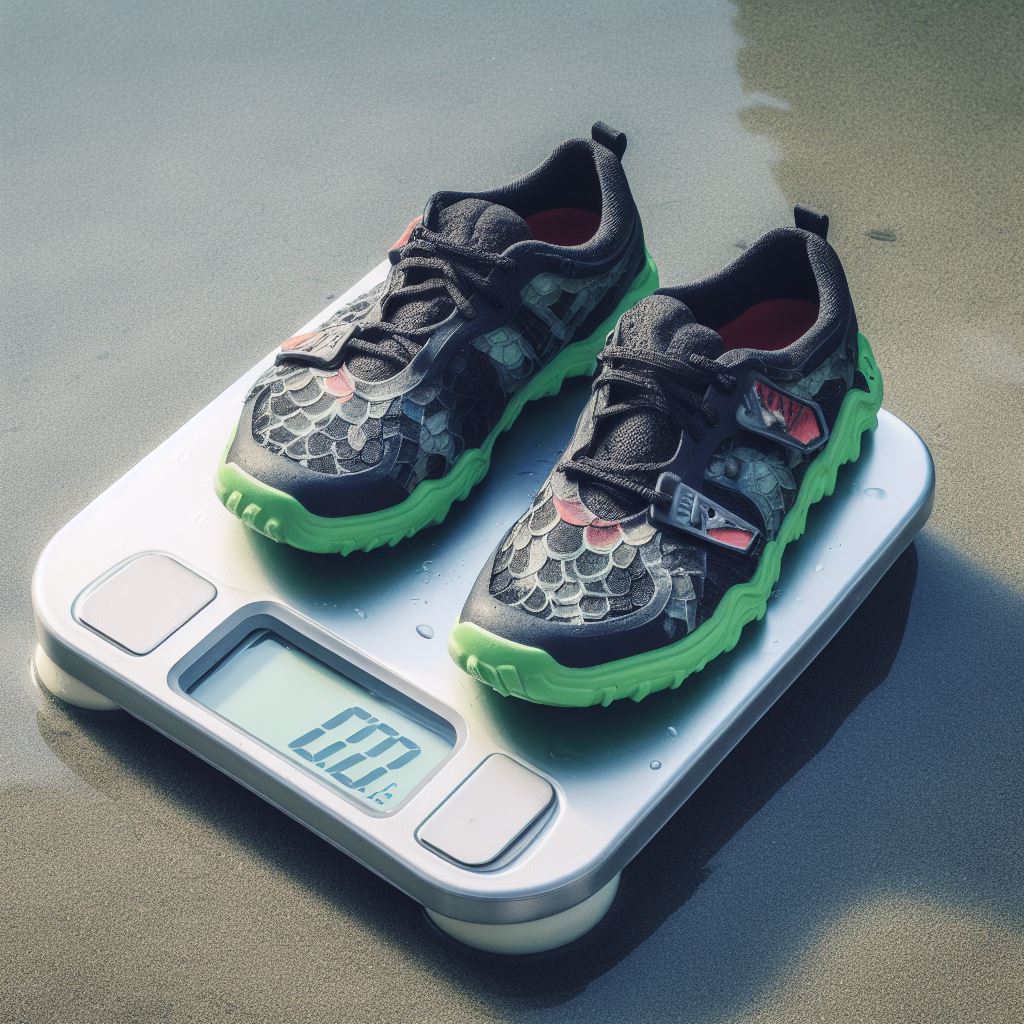
How To Choose The Right Shoe Based On Weight (How Much Do Water Shoes Weigh)
Choosing the right water shoe based on weight involves considering the intended activity and personal preferences. Here are some recommendations based on activity types and their suitability to different shoe weights:
1. Water Sports (Kayaking, Paddleboarding)
For dynamic water sports where agility and quick movements are crucial, lighter shoes in the range of 0.22 – 0.5 pounds are recommended. These shoes offer enhanced agility, enabling swift footwork and quick adjustments while maintaining buoyancy and comfort in the water.
2. Casual Beach Walking or Light Water Activities
For casual activities in relatively calm water, such as leisurely beach walks or light water play, a moderate weight in the range of 0.4 – 0.6 pounds provides a balance between protection and agility.
These shoes offer a versatile option suitable for various low-impact water-based activities.
3. Hiking through Wet or Rugged Terrains
For hiking in rugged, wet terrains or areas with rough surfaces, slightly heavier shoes ranging from 0.6 – 0.8 pounds are recommended. These shoes prioritize durability and protection, offering sturdier soles and construction to shield the feet from potential impacts and rough terrain.
4. Expert Insights
Expert opinions often emphasize the importance of a shoe’s weight in alignment with the activity. Lighter shoes are preferred for sports due to their agility benefits, allowing for quick, precise movements.
However, experts also note that slightly heavier shoes, while compromising some agility, offer added protection and durability, crucial for hiking through challenging terrains.
Considering these suggestions and expert insights, you can tailor your choice of water shoes based on the specific activity you intend to engage in
Understanding how weight impacts performance and comfort is essential in selecting the most suitable footwear for a more enjoyable and optimized experience.
The Best Lightweight Water Shoes (How Much Do Water Shoes Weigh)
Step Lighter, Adventure Further! Dive into the world of weightless wonders with our top picks for the Best Lightweight Water Shoes. From agile beachcombing to spirited water sports, these featherweight champions promise comfort, agility, and endless possibilities.
Discover how shedding ounces unlocks a world of exploration and exhilaration by keeping you light on your feet while amplifying every splash and step. Let the adventure begin with the perfect blend of weightlessness and durability!
Product Image | Product Name | Key Features | Rating | Price |
| ||||
| ||||
| ||||
| ||||
| ||||
| ||||
| ||||
| ||||
| ||||
|
The Benefits Of Lighter Water Shoes (How Much Do Water Shoes Weigh)
Lighter water shoes offer a range of benefits that extend beyond just water sports, appealing to anyone seeking comfort, ease, and versatility in various activities:
1. Agility And Quick Movements
Lighter water shoes, typically weighing between 0.25 – 0.5 pounds, provide increased agility, enabling quick and precise movements.
This benefit extends beyond water sports, appealing to anyone engaging in activities that require swift footwork, such as beach volleyball, water aerobics, or even casual beach walking.
The lighter weight facilitates nimbleness, making these shoes a suitable choice for those valuing mobility and agility in their recreational pursuits.
2. Reduced Fatigue And Enhanced Comfort
The lighter weight of these shoes significantly reduces the strain and fatigue experienced during prolonged activities. For individuals exploring shoreline trails, lighter shoes offer comfort over extended walks, minimizing the burden on the feet and legs.
This comfort aspect appeals not only to water sports enthusiasts but also to beachgoers, travelers exploring coastal regions, or anyone looking for comfortable footwear in and around water bodies.
3. Versatile And Travel-Friendly
Lighter water shoes are versatile and travel-friendly. Their reduced weight makes them easy to pack and carry, catering to travelers exploring diverse terrains.
They transition seamlessly from water-based activities to casual walks or even urban exploration, appealing to those seeking multi-purpose footwear that doesn’t compromise on comfort or agility.
4. Outdoor Enthusiasts
Hikers or trail walkers traversing wet or mixed terrains can benefit from the agility and reduced fatigue provided by lighter water shoes. Their versatility allows for easy transitions between water crossings and hiking paths, ensuring comfort and adaptability on varied terrain.
5. Families and Casual Users
Lighter water shoes are ideal for families or casual users frequenting beaches, lakes, or water parks. They offer an easy, comfortable solution for protection while wading in water, walking on sandy shores, or engaging in light water activities.
The reduced weight ensures minimal fatigue, even during extended family outings.
6. Fitness and Wellness
Individuals participating in water-based fitness classes or aqua therapy can also benefit from lighter water shoes. Their agility supports quick movements during exercise routines, providing comfort and reducing strain, which is vital for those focusing on health and wellness activities.
The appeal of lighter water shoes lies in their versatility, comfort, and ease of movement, catering to a wide spectrum of users engaged in various activities around water bodies or in versatile outdoor settings.
Their benefits extend beyond specific water sports, attracting those seeking practical, comfortable, and adaptable footwear for a range of recreational and wellness pursuits.
The Bottom Line On How Much Do Water Shoes Weigh
How much do water shoes weigh? The answer isn’t just a number; it’s your gateway to comfort, performance, and endless adventures. Choose wisely, considering the weight that fits your journey.
Whether it’s the swift agility of lighter shoes or the robust durability of slightly heavier ones, the right weight ensures your every step feels effortless. Embrace the perfect weight for your aquatic escapades and stride with confidence into a world where every ounce makes a splash!










